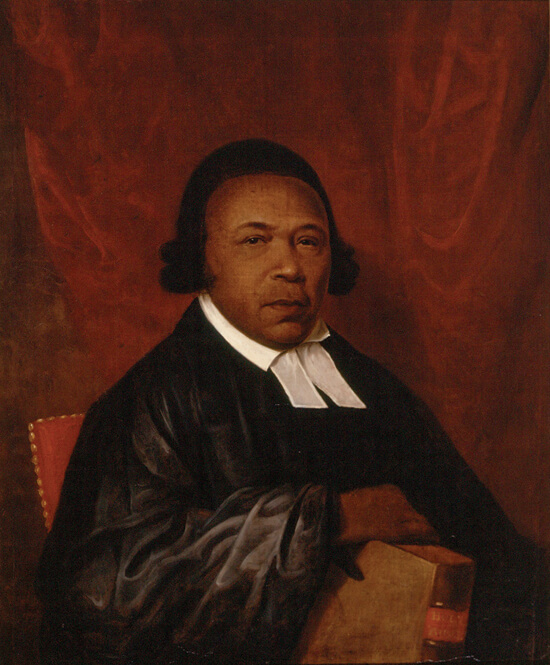We’ve all heard the names John and Charles Wesley, but there are a lot of other important names in the history of Methodism you may not know. The Unsung Heroes of Methodism series tells the stories of lesser-known figures whose lives and witness still impact The United Methodist Church today, even if their names aren’t familiar to us.
Meet more heroes
The Rev. Absalom Jones was a powerful orator, a dedicated abolitionist and the first African American ordained in the Episcopal Church. Jones found his call to ministry attending Methodist meetings in 18th Century America.
Born into slavery in Sussex County, Delaware, in 1746, he was separated from his mother and siblings at the age of sixteen when they were sold to another estate. He was taken to Philadelphia with his master, who allowed him to attend Benezet’s School, an institution established by Quakers to educate the local Black population. In 1770, he married Mary King, a fellow slave from a neighboring estate.[1]
Absalom took on additional work, not to secure his own freedom, but to purchase his wife’s, as the law determined the status of Black children according to that of their mother. This way he could ensure his sons and daughters would be born free. He succeeded in freeing her in 1778. Absalom himself remained enslaved until 1784, when his master manumitted him. Upon gaining his freedom, he adopted the surname Jones.[2]
During this time, Methodism was rapidly growing in Philadelphia, drawing both Black and white congregants. Jones was particularly drawn to the movement. His education at Benezet’s School, combined with his natural eloquence, helped him emerge as an early leader among Black Methodists. In 1784, he was appointed as a lay preacher at St. George’s Methodist Episcopal Church in Philadelphia. Two years later, he was joined by another Black preacher, Richard Allen, who would become his lifelong friend.[3]
Under Jones and Allen’s leadership, the African American membership at St. George’s increased significantly. However, Black congregants faced segregation—while white members sat in the main-floor pews, Black members were restricted to the balcony. In 1792, in response to this discrimination, Jones and Allen led a historic walkout of the African American members.[4]
While Allen went on to establish the African Methodist Episcopal (AME) Church as an independent denomination, Jones gravitated toward the Anglican tradition from which Methodism had originally emerged. In 1794, he founded the African Episcopal Church of St. Thomas, which became part of the Episcopal Church. Jones was officially ordained as an Episcopal priest in 1802.[5]
Despite following separate denominational paths, Jones and Allen continued to collaborate in organizing Philadelphia’s African American community. They mobilized Black volunteers to serve as nurses during the Yellow Fever Epidemic of 1793 and jointly petitioned the U.S. Congress to abolish the transatlantic slave trade and to prosecute those who kidnapped freedmen into slavery. Jones became widely known for his preaching, delivering a particularly moving sermon on New Year’s Day in 1808 to mark the official end of the slave trade. In 1816, he was present when Allen was consecrated as the first bishop of the AME Church.[6]
Absalom Jones passed away on February 3, 1818. Initially buried inside St. Thomas Church, his remains were later moved twice as the congregation relocated. In 1991, his body was cremated, and his ashes were placed in the current location of St. Thomas Church, where they remain today. The church also features a chapel dedicated in his honor. Each year, the Episcopal Church commemorates his legacy with a lesser feast on February 13.
[1] Beard, Merrie. “A New Biography of Absalom Jones.” House of Deputies of The Episcopal Church. 30 Jan, 2018.
[2] Idem.
[3] Tolly, Victor. “Absalom Jones (1746-1818).” BlackPast.org. 16 Dec, 2007.
[4] Idem.
[5] Idem.
[6] Jones, Absalom. “A Thanksgiving Sermon in St. Thomas, or the African Episcopal Church - January 1, 1808.” The National Park Service.





